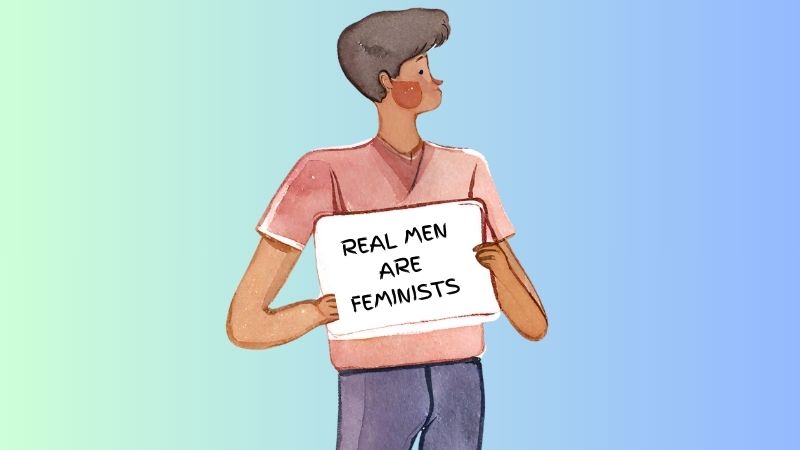The United Nations has declared 11 February the International Day of Women and Girls in Science. Every year we see more and more women (scientists, engineers, teachers...) getting involved in this initiative, dedicating time and effort to organising and participating in various activities. However, every time an activity of this kind is organised or the issue of gender equality is raised, the same question arises: Where are the men?
Professor Michael Flood, who specialises in men's involvement in gender equality, offers some recommendations for men to take a more active role in these initiatives.
Men on the agenda
Men in workplaces can make influential contributions to progress towards gender equality. Most men support principles of fairness and equity in workplaces and most welcome women’s participation in STEM. Despite this, few men so far have actively supported efforts to increase women’s participation. However, male allyship is vital if we are to make progress.
There is growing attention around the world to the need to engage men in efforts to build gender equality. There are increasing invitations to men to be part of the solution, whether to help build workplace gender equality, prevent domestic and sexual violence, or open up narrow models of manhood. Initiatives and organisations have sprung up devoted to working with men and boys, from local organisations and scholarly observatories to international networks such as MenEngage.
Men’s positive roles in building gender equality often are framed in terms of being ‘allies’, members of a privileged group who act to dismantle that same privilege. Key elements of male allyship therefore include taking action in support of gender equality and working in solidarity with women.
Recognising and challenging sexism
Men’s recognition of sexism and gender inequalities generally is poorer than women’s. Studies find that men perceive their workplaces as less sexist and more equitable than their female colleagues. Men are less likely than women to recognise both interpersonal sexism and institutional discrimination. This is especially true when the sexism is more subtle and seemingly benevolent, such as when it involves paternalistic behaviours such as men ‘protecting’ women and thus excluding them from particular fields or settings. These patterns reflect men’s and women’s differing experiences in workplaces and patterns of gender socialisation over their lifetimes.
On the other hand, when men do recognise and confront sexism, they receive more positive reactions from others, experience fewer negative consequences such as backlash or loss of social status, and their actions are taken more seriously than those by women. Because confronting sexism is seen not to directly benefit men, men who confront sexism may be seen by other men as more legitimate and selfless.
There are further barriers to men’s active support for gender equity in STEM. Some men recognise that gender inequalities are a problem, but not their problems –problems they can or should address. Some men recognise these problems but don’t know what to say or do. Others feel unsure of their place in equity efforts or fear how others will react.
Nevertheless, some men are taking action. In STEM and other workplaces, small numbers of men are starting to speak up in support of gender equity. Some are senior leaders and CEOs throwing their support behind gender equality initiatives, while others speak up in everyday work situations. In addition, a growing number of initiatives recruit and mobilise men as agents of change.
Common barriers to male allyship can be overcome. We can use education and communications strategies to improve men’s awareness of gender injustices and lower the threshold for what they will recognise as sexist. We can foster a sense of shared responsibility to act, a sense that we all have a role to play in fostering safe and inclusive workplaces. We can give men practical opportunities to take part in positive change. We can inspire a willingness to act and give men skills in taking action.

Men making change
Men can contribute to positive changes in gender inequalities in science and science communication in many ways.
For men themselves, I say: Start with yourself. Look carefully at your own life, asking: Do I consistently treat the women in my life with respect and care? Do I live up to ideals of equity and fairness as best as I can?
Another key step for men is to learn. Take responsibility for your learning, rather than only relying on women to teach you. Listen to female colleagues when they attribute certain work experiences to sexism, without being defensive, offering alternative explanations, or invalidating what they say. Educate yourself about gender bias and discrimination, and about male privilege and advantage.
Men can get better at noticing sexism. Look out for the subtle ways that some men may cause female colleagues to feel diminished by interrupting them in meetings or validating or giving more weight to men’s views. Speak up if you notice that men and women are being judged by different standards: on potential for men and demonstrated achievement for women.
In meetings, make sure that women have equal space to speak. Be aware of gendered patterns of interaction, like the fact that men are far more likely to interrupt women than men. Bring in and amplify women’s voices. Do not laugh at or tell sexist jokes or make or ignore comments that objectify female colleagues, and let others know that you disapprove of these.
The standard we walk past is the standard we accept. Men can make simple statements challenging sexism and discrimination. We can speak up if we notice gender-based assumptions being made about our colleagues’ needs, interests and competencies: she won’t want that position or that location because she has a small child, he doesn’t need work-life flexibility, and so on. We can “call in” other people if we see them abusing their power with others, inviting them constructively into change.
Other steps men can take involve our professional roles and networks. Men can actively mentor or sponsor women, including helping women navigate ‘hidden rules’ in the organisation and making women’s accomplishments more visible. Men can reform male-dominated work groups. Men can volunteer to take on administrative and service tasks, rather than allowing these always to be delegated to or taken on by women.
Women often have been told to ‘lean in’ at work, based on the false assumption that gender inequalities reflect women’s lack of assertiveness or ambition rather than structural and cultural obstacles. Nevertheless, the other side of women ‘leaning is’ is men ‘leaning out’: stepping back so others can step forward. When asked to work on a project, men can consider whether saying no might allow someone who would not normally get asked to take on the opportunity. When asked to speak at an event, consider suggesting women to speak in your place. Make space for women to move into the positions of power and authority that they deserve but from which they are often excluded.
Men also can be become advocates for gender equity. Male managers and leaders can drive change, challenging the institutional structures and systems that produce inequality. Men can become involved in initiatives and groups focused on gender justice, or start them in collaboration with women colleagues. Men can show public support for this work: turning up, offering support, and ‘walking the walk’ in their everyday work. Men also can encourage other men’s involvement, inviting them to events on gender equity and helping to build a critical mass of male allies.
Getting it wrong and right
There are mistakes it is easy for men to make (and frankly, I’ve made most of these at one point or another). One is to see only other men, or bad men, as the problem, rather than critically scrutinising our own attitudes and behaviours. Another is taking over or dominating. Many men have been socialised into confidence and authority, and this can play out in unhelpful and damaging ways. A third common mistake is trying to ‘rescue’ women. This seemingly expresses care for women, but it also treats them as weak, passive, and helpless and assumes that the rescuer knows what is best.
Two other mistakes also are common. One is thinking that only perfect, saintly men can take action. Instead, all of us are merely human, inevitably we will get things wrong at times, and in such cases we must simply acknowledge this, make amends, and move on. It is better to start and learn along the way than not start at all. Another is ‘performative’ allyship, in which we adopt self-promoting, superficial actions to gain social status rather than engaging in real efforts to make change.
The good news
The good news is that more and more men these days are speaking up in support of gender equality, and there is growing insight about how to engage men in positive change.
Men who want to be allies to women, and the women who want to work with men, don’t need to start from scratch. There are groups, networks, and campaigns. There are rich collections of free resources online on the website “XY: men, masculinities, gender politics”, reports like my and Russell’s Men: Make a Difference (2017), and books such as Ali’s Her Allies (2021), Ford, Koch and Armstrong’s The Accidental Sexist (2021), Gallagher’s How Men Can Help (2022), and Phelan’s Men Stepping Forward (2023).
Male allies can make a vital contribution to progress towards gender justice in science. Men’s pro-feminist advocacy is no magic cure for systemic gender inequalities. But if substantial numbers of men can express and act on their support for gender justice, in partnership with women, this will contribute to lasting change.
Professor Michael Flood is a researcher and advocate at the Queensland University of Technology in Brisbane, Australia.
